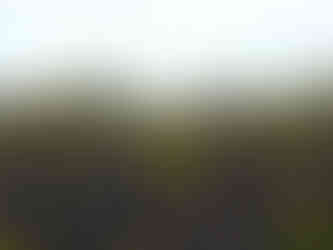Kaimu Black Sand Beach, Kalapana
- Stefan Verbano
- Oct 24, 2021
- 3 min read
A quarter-mile walk down a red cinder footpath leading away from the sprawling market complex known locally as "Uncle Robert's" in Kalapana brings you to the "New" Kaimu Black Sand Beach.
This stout shore of formidable lava boulders is constantly being blasted by pounding waves, which send the rocks into a frenzy when they break. Over time, the whirlpool of turbulent water and rock has broken the lava cinders down into patches of sand that seem to rearrange themselves with the tides. New Kaimu Beach is a poor spot for swimming, though, even to the point of being dangerous. But it is a mesmerizingly beautiful, serene and private place to take in a beautiful Kalapana sunset or watch for rainbows on one of Puna District's many sun-rain-sun-rain days. It's a great place to catch a glimpse of Puna's raw, rocky coastline, and get a chance to walk through a piece of living volcanic history.
Up from the shoreline is a verdant grove of young coconut palms which radiates out from the beach in all directions. These palms, along with the papaya trees, ornamental ginger, noni plants, ti plants, kukui nut trees and breadfruit trees found along the trail to the ocean, were planted by Kalapana residents after the 1990 lava flow rolled over Kalapana and Kaimu, covering cars, stores, parks and more than 150 homes beneath rock that is 85 feet deep in some places, all but completely destroying both villages.
Hiking the trail to the beach is like moving through a piece of Hawai'i Island's geologic past. Far in the distance, the slopes of Mauna Loa and its surrogate volcano, Kilauea, can be seen shrouded in a blanket of fog. It's easy to see the path the lava took: how the steep contours of the land sent Kilauea's lava downhill, where it spread out evenly, filling in what was once known as Kaimu Bay and adding on 1,000 feet of coastline. Since then, the land has been reclaimed in many places, and simple manmade structures can be seen sprinkled throughout the lava field. Still, much of the landscape looks just like it did three decades ago; a flat plane of formless black lava punctuated in places by the green of pioneering plants and striped by the thoroughfare of red cinder marking the trail.
Along the path is a sparse assortment of art installations, including a rock garden inhabited by plaster busts of famous Hawaiians throughout history, including several past kings and -perhaps most prominently - Queen Lili'uokalani, the last sovereign monarch of the Hawaiian Kingdom who was deposed by the U.S. military on January 17, 1893.
Kaimu Beach is a tranquil, often deserted piece of Kalapana coast, perfect for ocean-watching or picnicking. Grab snacks at the foot of the trail at Uncle Robert's Market, which boasts a grocery store, smoothie shack and restaurant open weekdays for lunch and dinner, serving up classic Hawaiian comfort food. Make sure to haul out all rubbish, and make use of the Market's restroom and recycling facilities.
Due to coronavirus restrictions, the normal Kaimu Beach parking lot across the road from Uncle Robert's is closed, but Market staff have confirmed that the beach remains open. Just park beside the road after turning off the highway, walk the few hundred feet farther down to the main market area, and then follow signs for Kaimu Beach.






















Comments